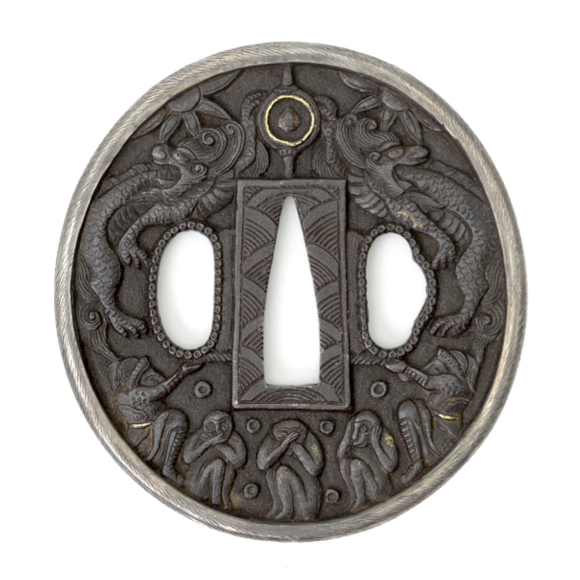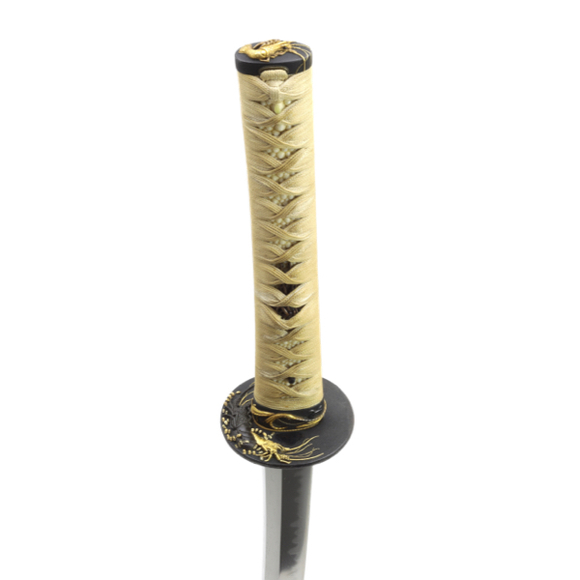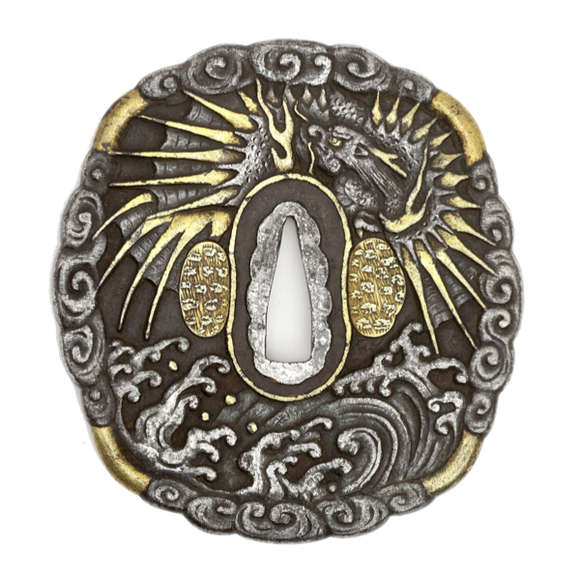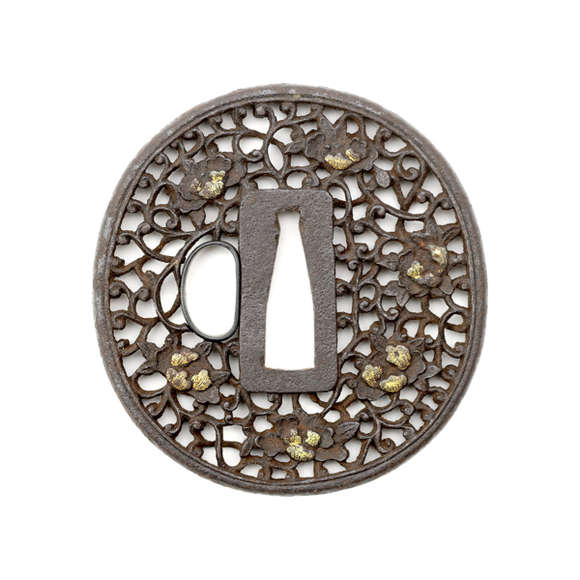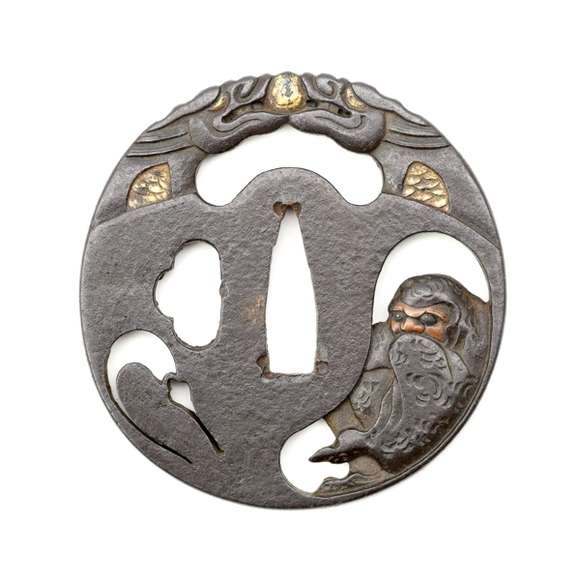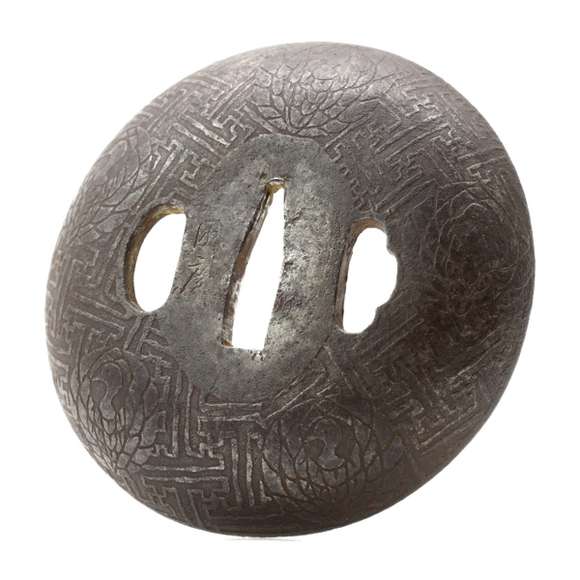Japanese sword guard depicting three wise monkeys conveying the message see no evil, hear no evil, speak no…
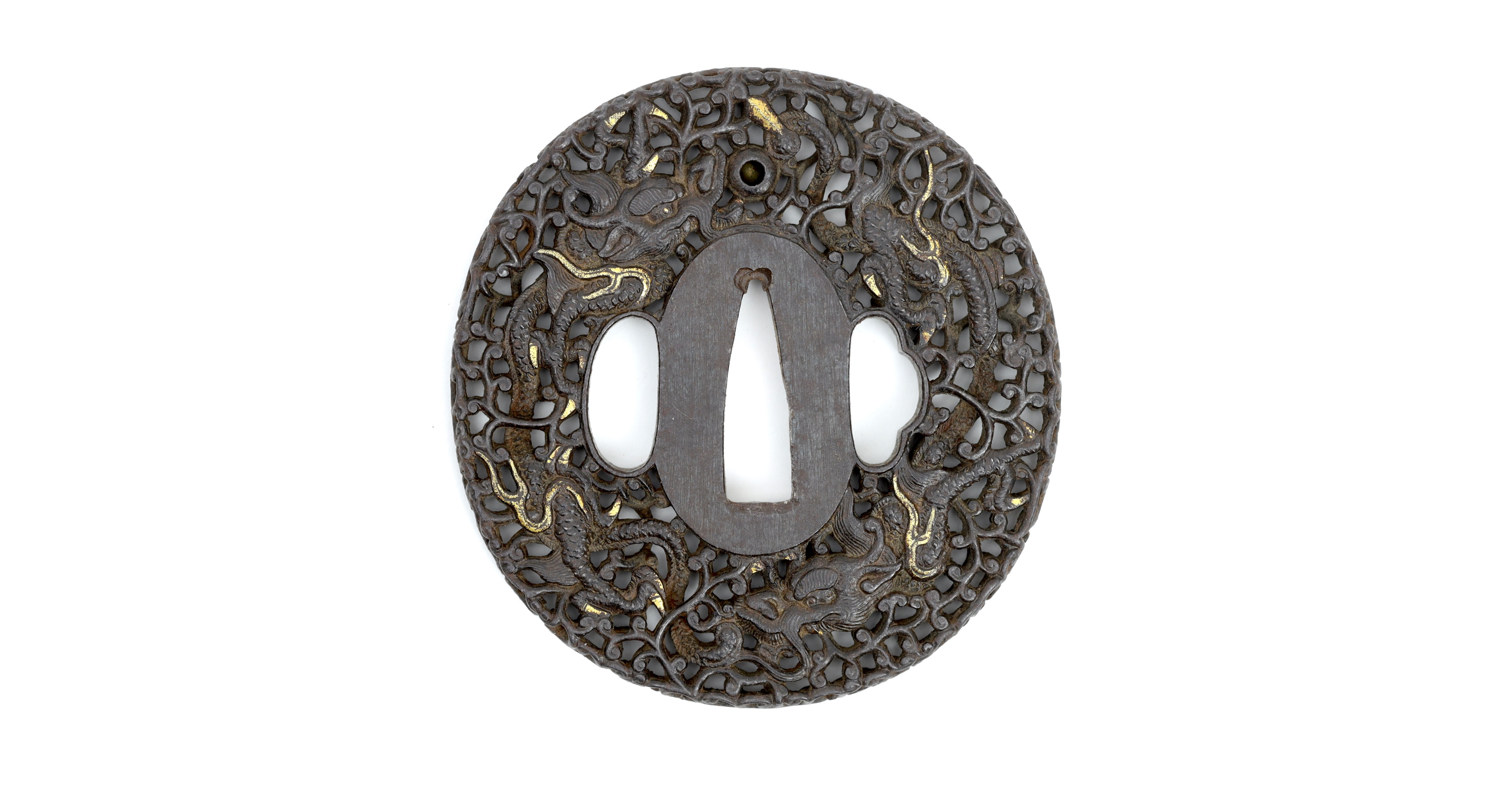
73 x 70 x 6 mm
Iron, gold
Hizen, Japan
18th century
Imported from Japan
Introduction
The Yagami (矢上) school started in the 18th century with first-generation Mitsuhiro, who was succeeded under that name by his younger brother, and then the 1st generation's son made the 3rd generation. The two sons of the first generation took over under the names Seishirō and Hanjirō. They worked mostly in carving iron but sometimes other metals are seen.
Located in a suburb of Nagasaki, their designs took inspiration from Chinese dragons and art motifs, designs that would later become known as Nanban, "Southern Barbarian". They also made designs with many monkeys, referred to by collectors as "1000 monkeys," and works with hares and shrimp are also known.
This example
This very finely carved tsuba ranks among the best works done in the Nanban style in Japan. It depicts two dragon among foliage, chasing the sacred pearl. The pearl is a movable iron ball in a larger casing. The dragons are very detailed, their bodies moving in and out of undercut foliage. Even the rim is done entirely in openwork with slender scrolling tendrils.
The work is highlighted with elegant use of gold overlay on the dragon's claws, flames, and a ken sword hold in the tail of one of the dragons.
N.B.T.H.K. papers
It comes with N.B.T.H.K. Hozon papers which don't say much other than describe the physical appearance of the piece and mumei, nanban. (Unsigned, foreign barbarian). This is unfortunately often the case with pieces in the Nanban style, they stop looking at details that make the piece attributable to a specific school.
In this case the finishing of the seppa-dai (washer plate) and both hitsu-ana (openings left and right) which are lined with a thin metal strip, plus the style and manner of carving, all point to Yagami school or a close offshoot thereof.
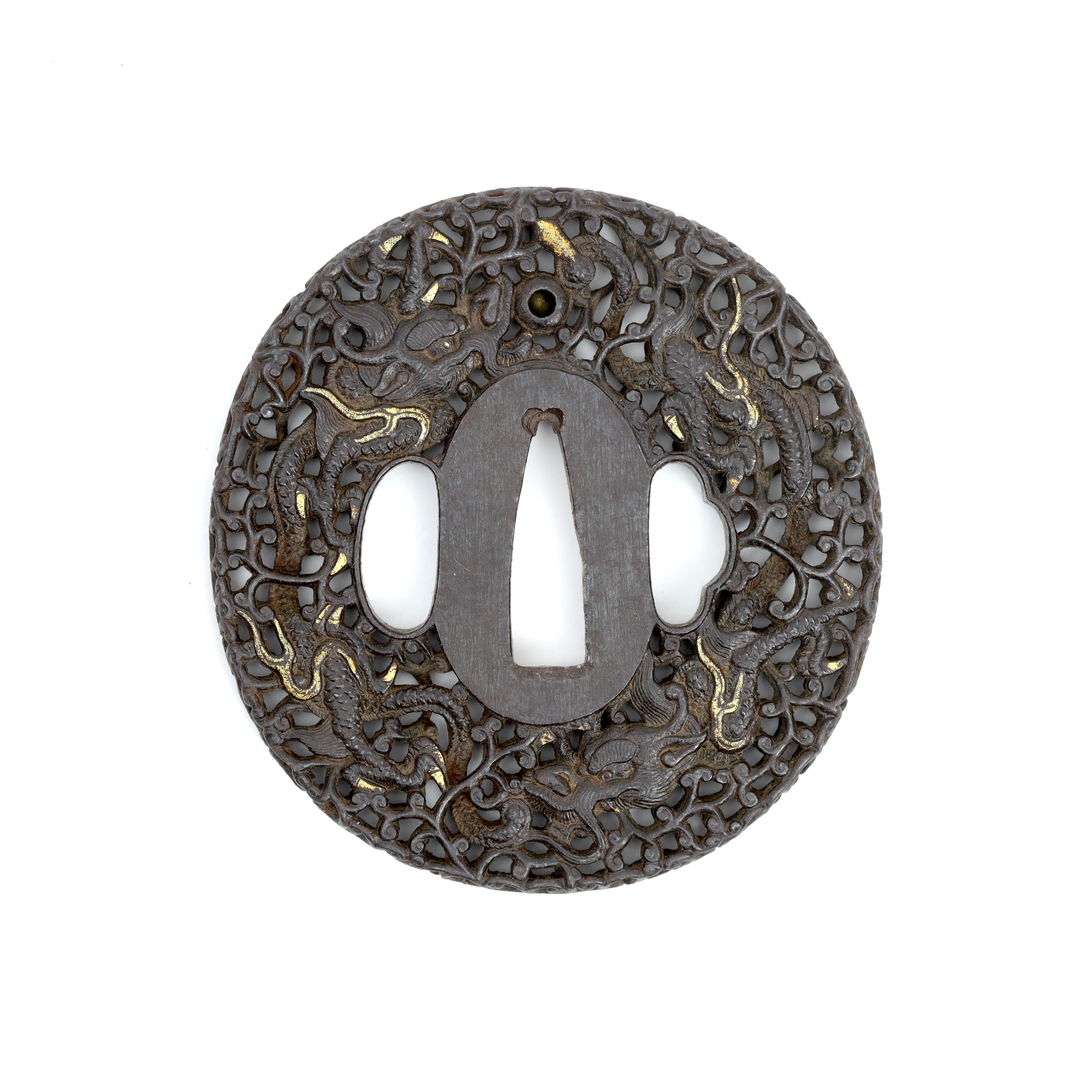
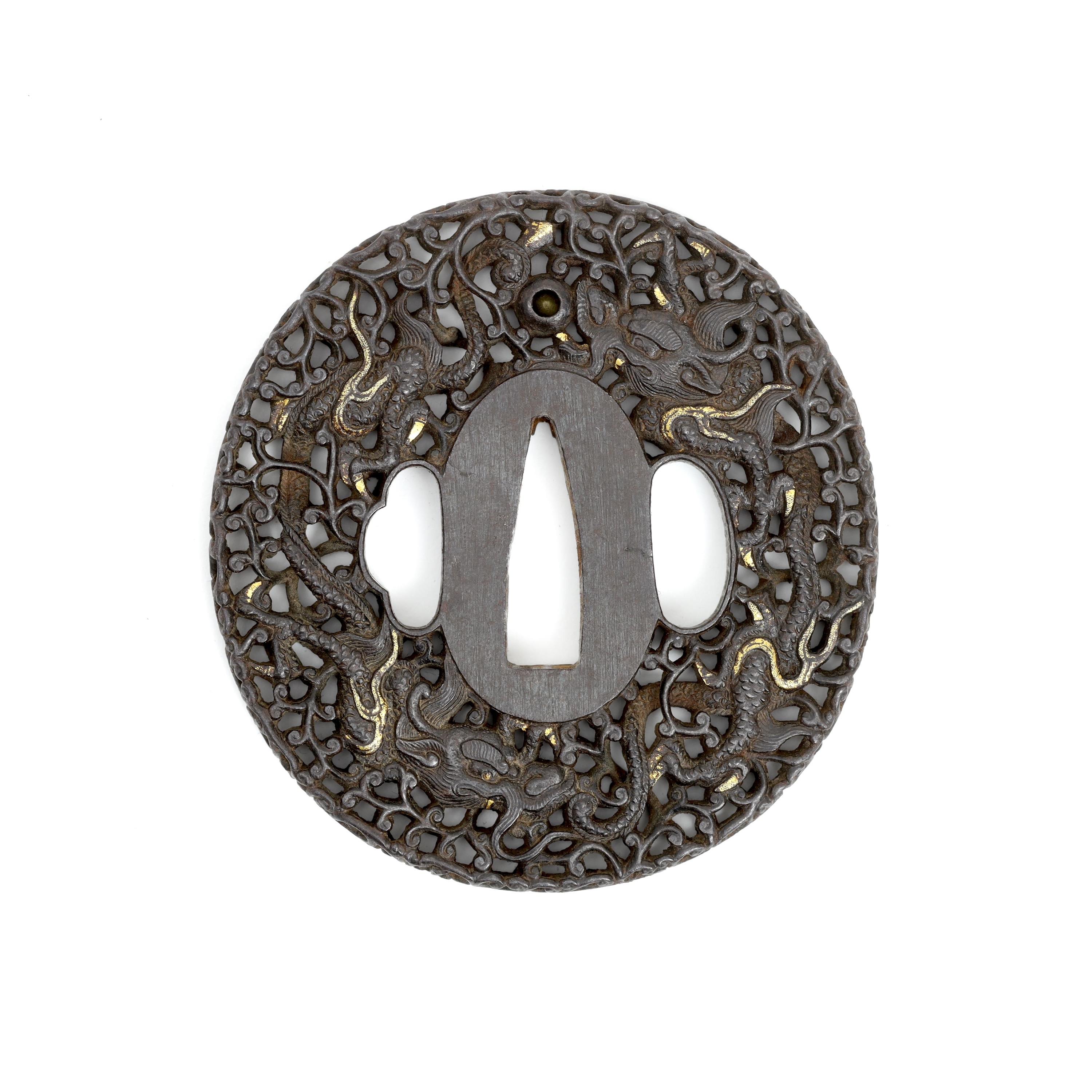
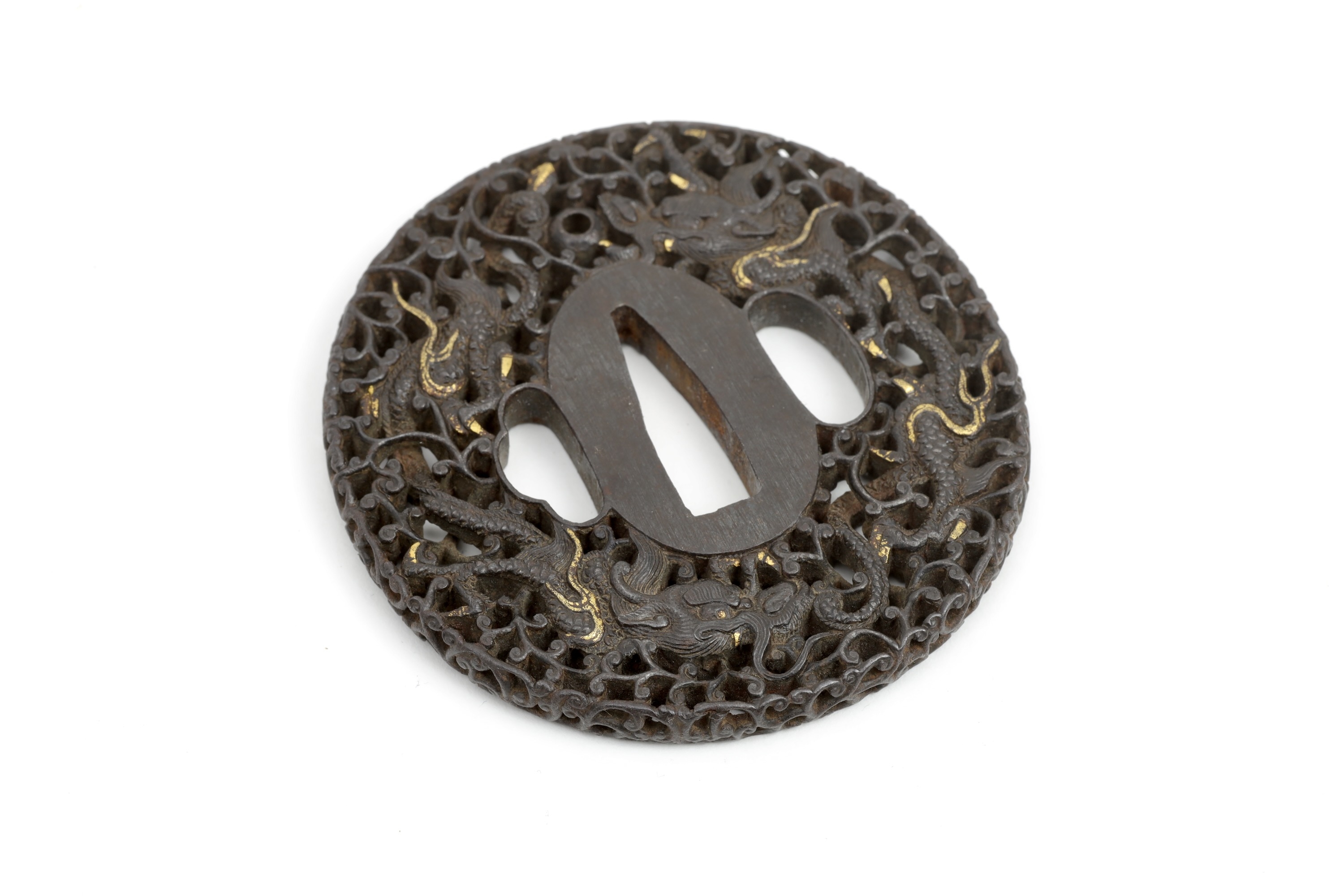
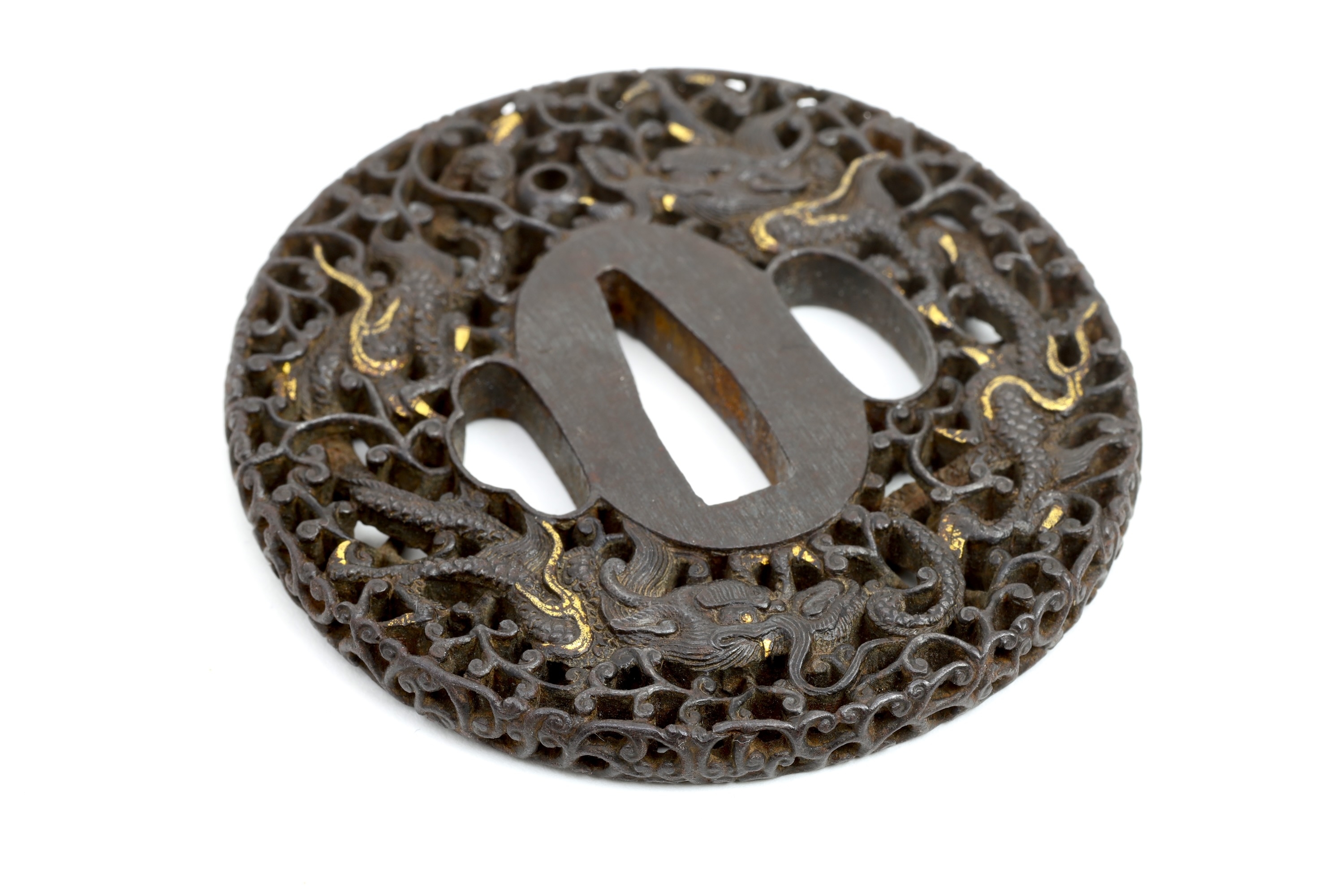
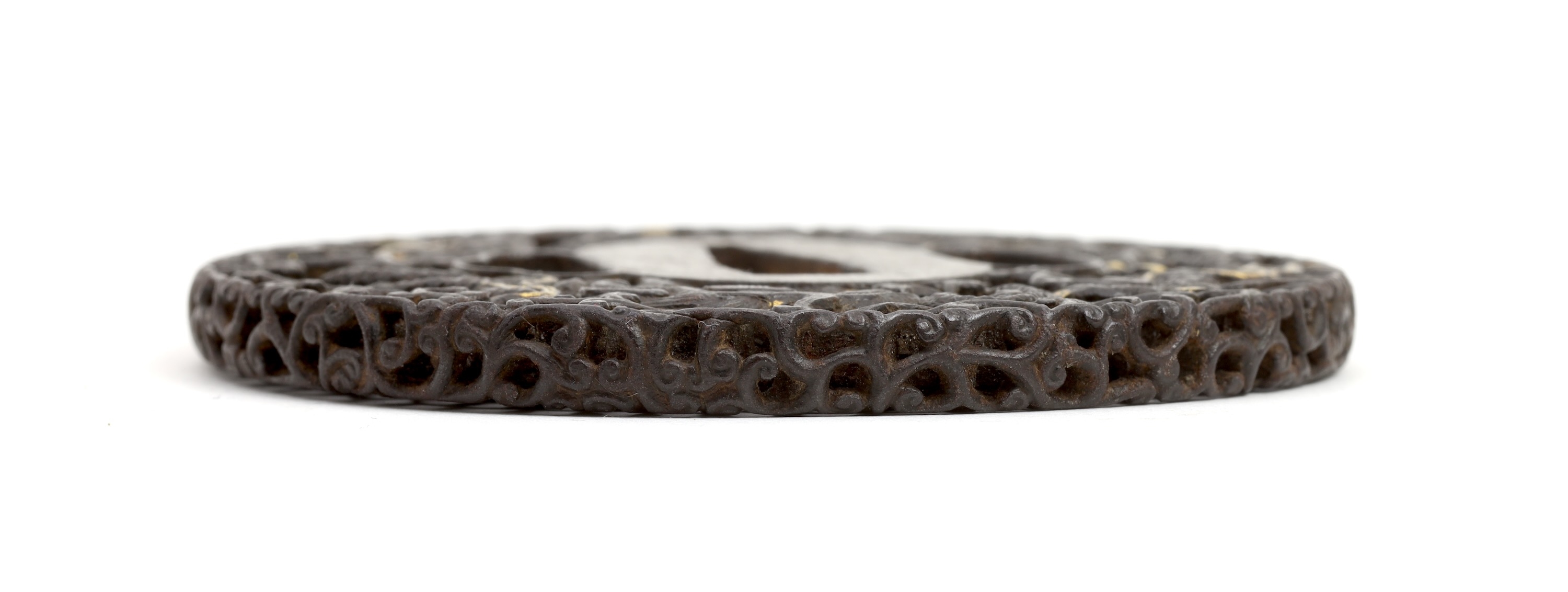
The very detailed mountings are decorated with designs of Japanese spiny lobsters.
Executed in "nanban style" openwork with chiseled and gold-encrusted peonies.
A peculiar tsuba with a depiction of Bodhidharma and two dragon chasing a pearl.

